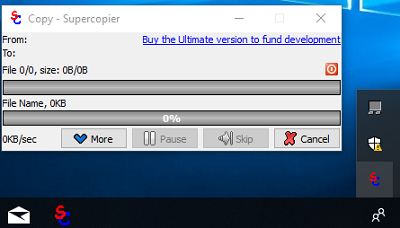

Real-time protection of Windows Defender Antivirus seems like the cause of Windows 10 file copy slow in many cases. This service will run defragmentation and help the system to clean bad sectors when you start transferring data between drives. Click Apply and then OK to confirm the settings. Change Start type into Automatic and tap Start under Service status.Ĥ. Find Optimize drives, right-click it and choose Properties.ģ. Press Windows + R and type “ services.msc” in the Run window. This one has been proven to work by many users, especially those who just upgraded from windows 7 to windows 10 and find the copy speed very slow.ġ. Enable Optimize Drives for Defragmentation If it doesn’t detect any error, move to the next method. Follow the wizard to complete the checking. Switch to Tools tab, tap Check under Error checking to check the drive for file system errors.ģ. Open This PC, right-click the drive you want to perform data transfer, choose Properties.Ģ. No matter you are trying to copy files to an internal drive or external drive, you can use the built-in tool to check its file system, and fix the errors that could slow down the copy speed in Windows 10.ġ.


Check the USB port and update the drivers If the problem persists, try following fixes according to your situation: Method 1-4 apply to any case Method 5-6 are mainly for file copy over network Method 7-8 might work if you are transferring data to or from USB drive. In Windows 10, just go to Start > Settings > Update & Security > Troubleshoot, and run corresponding troubleshooter. Since you are not sure the exact cause of low file copy speed, it wouldn’t hurt to do a simple troubleshooting first. How to Fix Slow File Transfer in Windows 10?

Tons of Windows 10/11 users have reported the slow file transfer issue as above, the scenarios include: I ran into a problem after upgrading to Windows 10, that whenever I try to copy files between two drives, the speed is extremely slow.


 0 kommentar(er)
0 kommentar(er)
